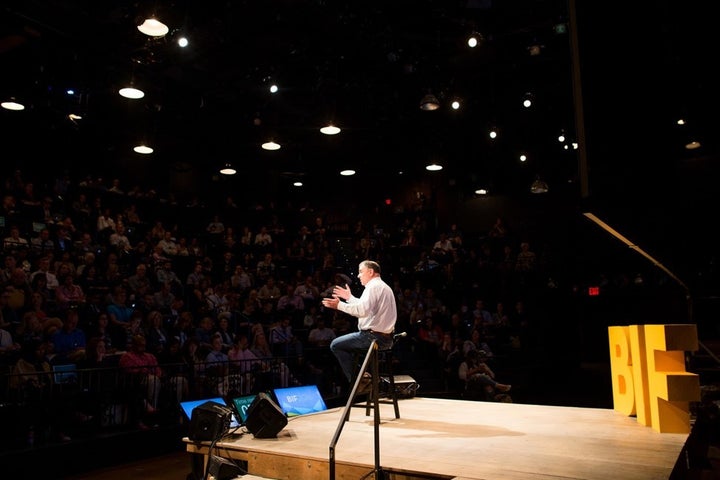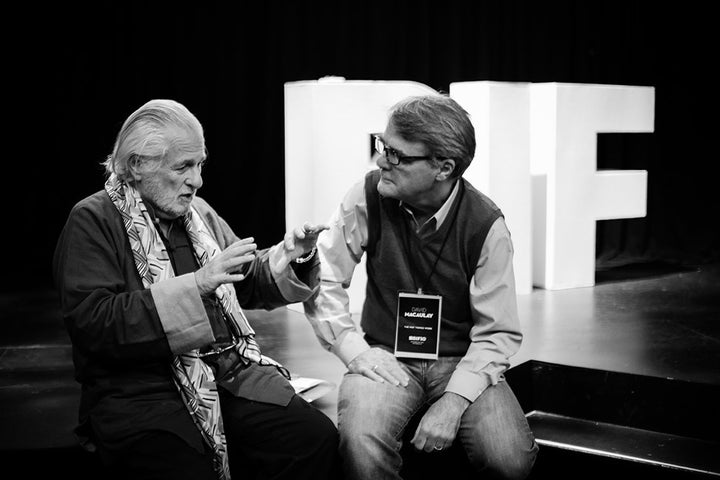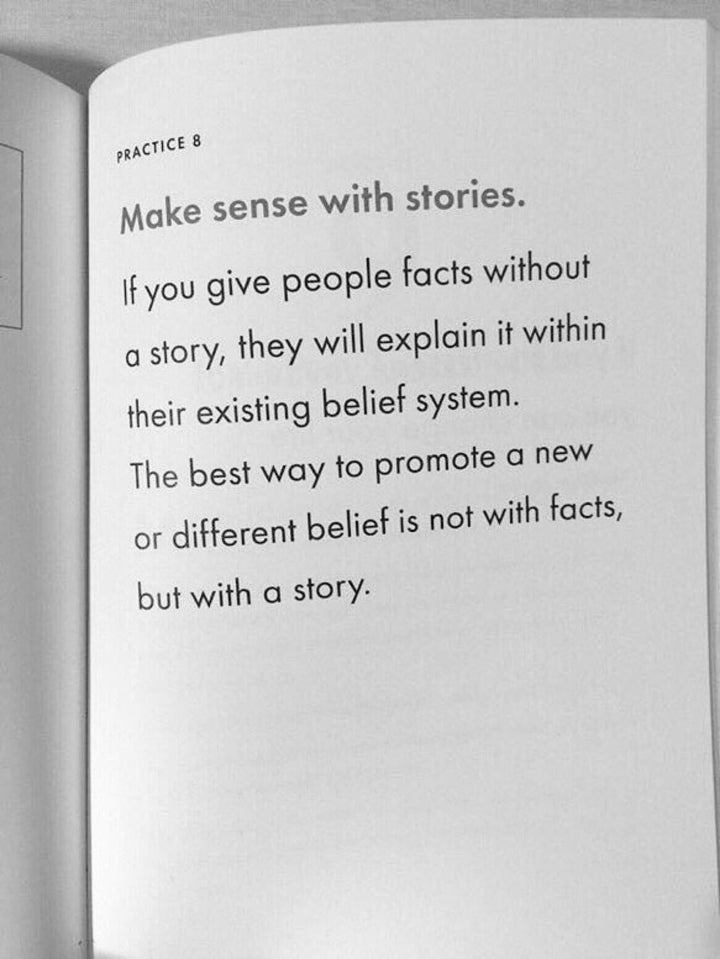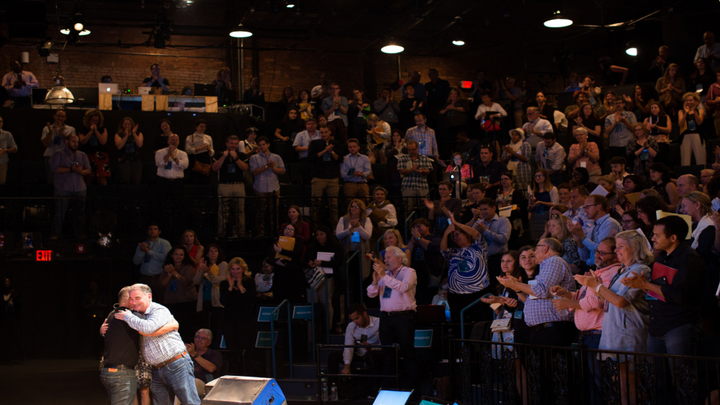“People think in stories, communicate in stories, even dream in stories. If you want to get anything done in an organization, you need to know how to use story to move people.” — Steve Denning

Saul Kaplan, Founder and Chief Catalyst at BIF
The power of storytelling can make or break the success of your organization. In today’s rapidly changing landscape, it is an imperative for success and a key element for any transformation, as Founder and Chief Catalyst of the Business Innovation Factory (BIF) Saul Kaplan reminds us, we live in a time that screams for transformation and the best we seem to come up with is tweaks. Nothing can be transformed without effective storytelling, Stories inspire us and catalyze us to act. Stories can create an emotional connection, generate the next big idea, reshape our most vital systems, or according to Saul, stories can change the world.
Saul (@skap5) knows from experience how powerful storytelling can be. BIF’s annual Collaborative Innovation Summit, #BIF2017 on September 13-14 in Providence, Rhode Island, has been doing just that for the past 13 years, bringing together innovators and changemakers from across the country and the world to share their personal stories of transformation. Why? The prerequisite for change starts with creating an emotional connection. Smart leaders know that today, tweaks aren’t enough in order to avoid being netflixed, obliterated by unsuspecting disruptive business models and that transformation starts with the human side of innovation.
“There is no greater agony than bearing an untold story inside you.” ― Maya Angelou
I asked Saul to tell us more about his philosophy, experience and work at BIF.
Why is storytelling essential to transformation?
Storytelling is a BIF core value. We believe that advancing our mission to enable system change in health care, education, and public services is critically dependant on our ability to create, package, and share stories from our community and our work. One of the first things I did while launching BIF, 13 years ago, was to create an Innovation Story Studio as a platform to integrate storytelling into everything we do. By openly sharing stories about the process and output of BIF’s work we are strengthening our community of innovators and becoming more purposeful with every new story.

Alan Webber speaking at BIF
My good friend Alan Webber, Co-founder of FastCompany and #BIF2017 storyteller, once told me “Facts are facts, but stories are who we are, how we learn, and what it all means” and I think that holds true even today. Storytelling is an important tool, not only innovators, but for anyone seeking to enable transformative change. It’s the heart of what we do at BIF. It’s in our DNA. We believe that in order to transform our most vital systems in healthcare, government, and education, it’s imperative that we craft the right narrative and by sharing these change stories, we become more purposeful in our community of innovators and across our networks.
When we connect outside our normal silos, we build our network of capabilities and gain the most by experiencing change through the lens of others. Transformation requires omes an emotional connection to the work. When we feel involved, when we feel like we are an essential part of the story, only then do we begin to really see transformation start to happen.
What have you learned about the importance of storytelling and how to make it purposeful at the BIF Summit?

Richard Saul Wurman with David Macaulay at BIF
I will never forget meeting with my friend, mentor, and design icon Richard Saul Wurman (RSW) to get his advice prior to our first summit 13 years ago. As an innovation junkie, it doesn’t get any better than having RSW as a mentor. He founded TED for heaven’s sake. I went to the meeting prepared with an approach that I had worked on for weeks. As a scientist and MBA, of course, I had a matrix, with speakers organized by theme. RSW heard me out and could only shake his head saying, Saul, you have a lot to learn about how to create an emotional connection with an audience. He patiently told me to throw away the matrix. He said it was as simple as inviting people to a dinner party. Ask speakers that you want to have dinner with to share a personal story that you are selfishly interested in and invite others to listen in. RSW has been a storyteller at most of the BIF Summits over the years and I’m psyched that my friend will share the story of his latest book, Understanding Understanding at #BIF2017.
“The best way to promote a new or different belief is not with facts, but with a story.” — @DaveGray, BIF Storyteller

Dave Gray - Liminal Thinking: Create The Change You Want By Changing The Way You Think
I love RSW for his advice. That is exactly what we do. No PowerPoint presentations, no matrix, just stories. One glorious story after another in no particular order, from storytellers (not speakers) sharing personal and raw insights about what innovation means to them. After about four stories back to back with no boring Q&A to break the rhythm we take a long break where all of the storytellers and participants can interact, connect, and share their own innovation stories and experiences. No breakouts, flip charts, or prescriptive assignments. It is up to the 500+ participants to decide what is compelling and which connections are most interesting and valuable. The most interesting collaborations every year come from enabling ‘random collisions of unusual suspects’ who find value in the gray area between their interests and disciplines. We call is making a RCUS!

Saul Kaplan and the power of attracting random collisions of unusual suspects
Every year one of my favorite things to do is connect with each of the storytellers to discuss the upcoming summit and their stories. I am almost through these calls for our upcoming summit, #BIF2017, on September 13-14. Talk about a kid in a candy store. To talk with each of these innovators is inspiring and a great joy. Check out the #BIF2017 storytellers and you will see what I mean. These innovators are asked to give speeches all of the time. Many of them have written books and do speaking tours. They all have PowerPoint presentations in the drawer and a stock speech they can give in their sleep, which they are not allowed to use at a BIF summit. I always find our storyteller’s reactions interesting when they discuss preparations for sharing a story versus giving a speech. They all say that it is far more interesting and challenging to tell a story than to give a speech. Regardless of their fame on the speaking circuit, there is always trepidation in their voices when we discuss their stories. Every storyteller over the years has said that they are excited to hear the stories from the other storytellers and will be glad when they are done sharing their own. That is why they take the gig. It is a refreshing break from the grind of the speaking circuit. Storytelling is harder but more personally rewarding.
The storytellers catalyze a reaction over the two days of the summit. Participants engage in colliding with the stories and each other to figure out what is relevant and meaningful to them. We don’t tell participants what their takeaways should be or prescribe what’s important. It’s up to the audience to decide what to share with their networks and what insights to act upon. Inspiration is personal and it’s up to participants to decide where it comes from, who to connect with, and how to emerge with a renewed sense of purpose. When our networks come together in random, unusual ways, that’s where the real magic happens.
Here is my story that I shared at BIF about being a first generation immigrant, being picked last and importance of earning the right to be picked. This was a scary and very emotional story for me to share.
How can storytelling shape the future and change the world?
Our BIF mantra is “Connect, Inspire, Transform”. It’s time to up the ante on Transform. Together we will catalyze something bigger than any of us separately. We can make reinvention safer and easier to manage. The connections we make and reinforce at #BIF2017 will provide the basis for us to collaborate and take action throughout the year, exploring and testing next practices, new business models and transformed social systems. Together, we need the courage to try more stuff, to leverage the power of storytelling, to shift perspectives to catalyze something bigger than ourselves.
“It’s time to go from tweaks to transformation. It’s time to make our self-organized networks more purposeful. It’s up to us to become powerful storytellers to co-create the important societal changes we want to see in the world. A good story can change the world.” — Saul Kaplan
I agree with Kaplan, stories can change the world. Today’s business leaders must practice the art of storytelling in order to lead meaningful and long lasting business transformation. Here are 10 amazing BIF stories that are a must watch:
- Whitney Johnson, Disrupt Yourself
- Deb Mills-Scofield, Love and the Network in an I-Thou World
- Kare Anderson, The Glue That Hold Others Together
- Liza Donnelly, LIVE-Drawing What She Sees In The World
- Irwin Kula, Religion As Tech Applying Innovation Theory to Making ‘Good People’
- Angela Blanchard, Emerging After The Storm
- Alex Osterwalder, What We Shape We Can Change
- Dave Gray, Drawing Reality, Picturing A Future
- John Hagel, How The Power of Narratives Fuels Movements
- Walt Mossberg, A Watchdog For This Tech Revolution
“I wanted a perfect ending. Now I've learned, the hard way, that some poems don't rhyme, and some stories don't have a clear beginning, middle, and end. Life is about not knowing, having to change, taking the moment and making the best of it, without knowing what's going to happen next. Delicious Ambiguity.” — Gilda Radner
